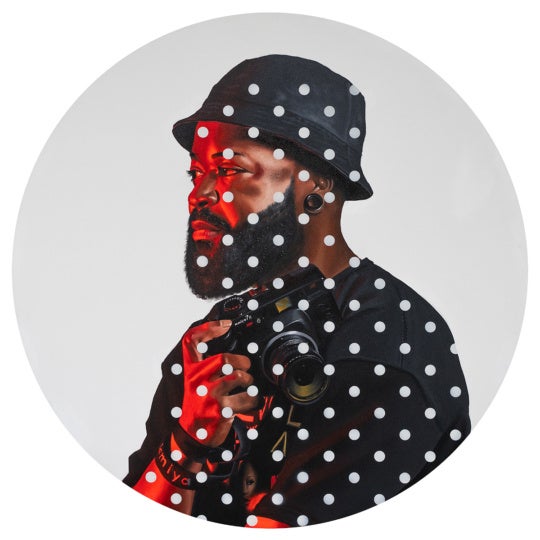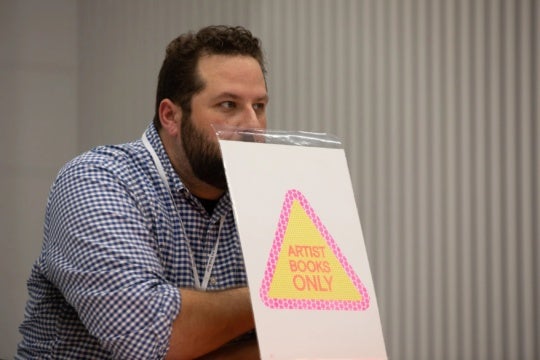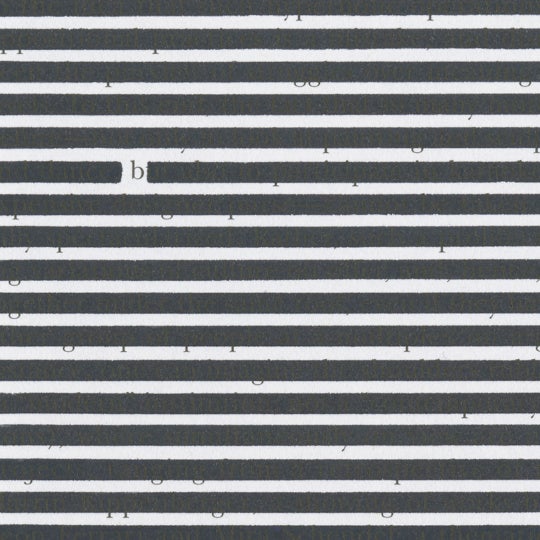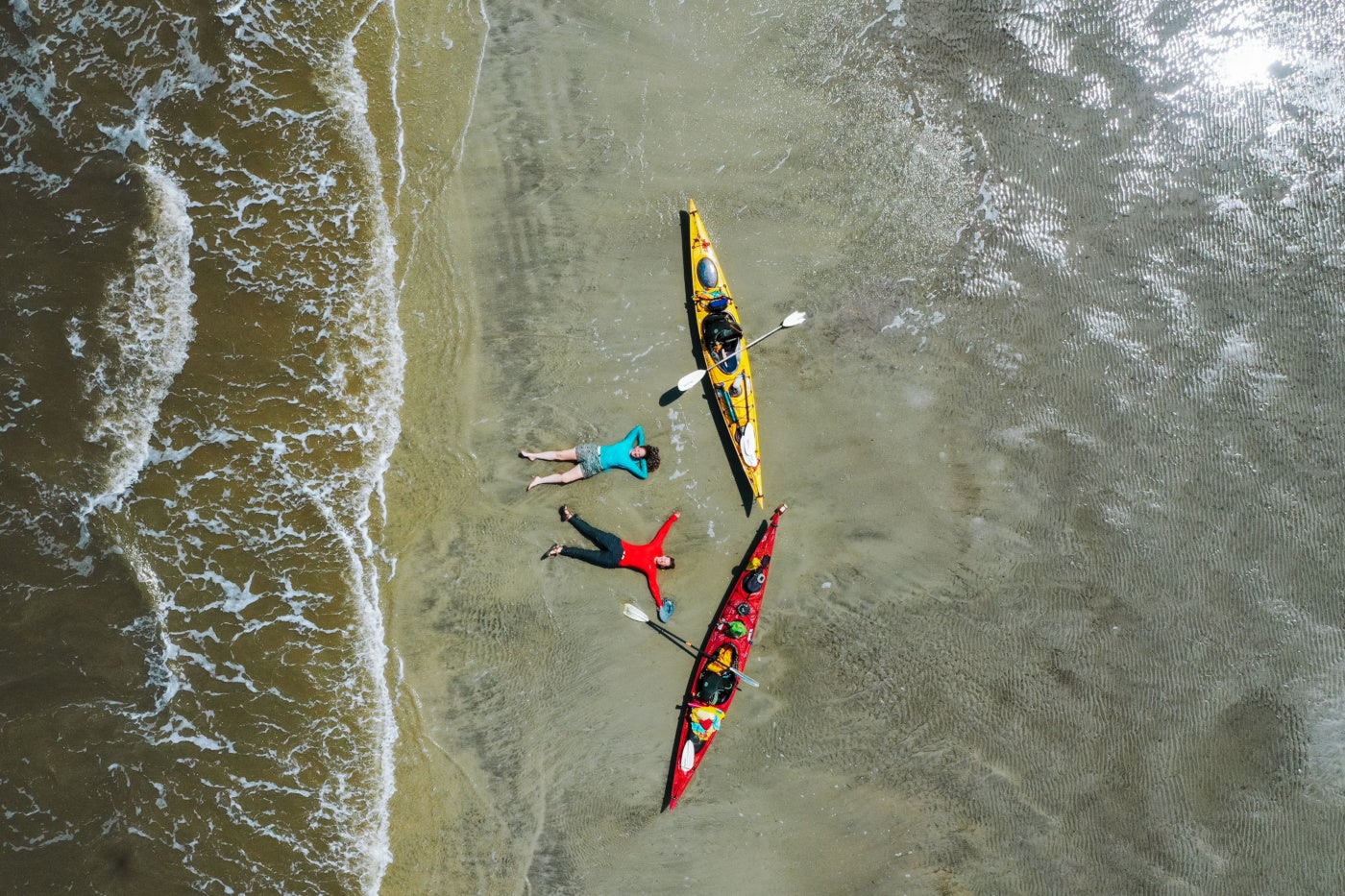
On May 17, 2024, Rachel Parish and Sarah Cameron Sunde embarked on an epic journey from the Browns Mill Golf Course in Atlanta to the Atlantic Ocean at Sapelo Island—a kayak trip that spanned hundreds of miles and thirty-eight days on the water. Because Atlanta is landlocked, people tend to overlook how water flows from the city to the ocean. Floating down the South River to the Ocmulgee River, then the Altamaha River to the ocean, illustrated the connectedness of Georgia’s urban and rural communities and the ripple effects of the fight for environmental justice.
Commissioned by Flux Projects, Atlanta to the Atlantic (2024) intends to increase awareness of the South River, which is routinely paved over, polluted, and ignored, depriving Atlanta residents of personal connection to the mighty water source undergirding their city. The South River flows freely in over 300 public places in Atlanta, and it was ranked the fourth most endangered river in the United States in 2021.
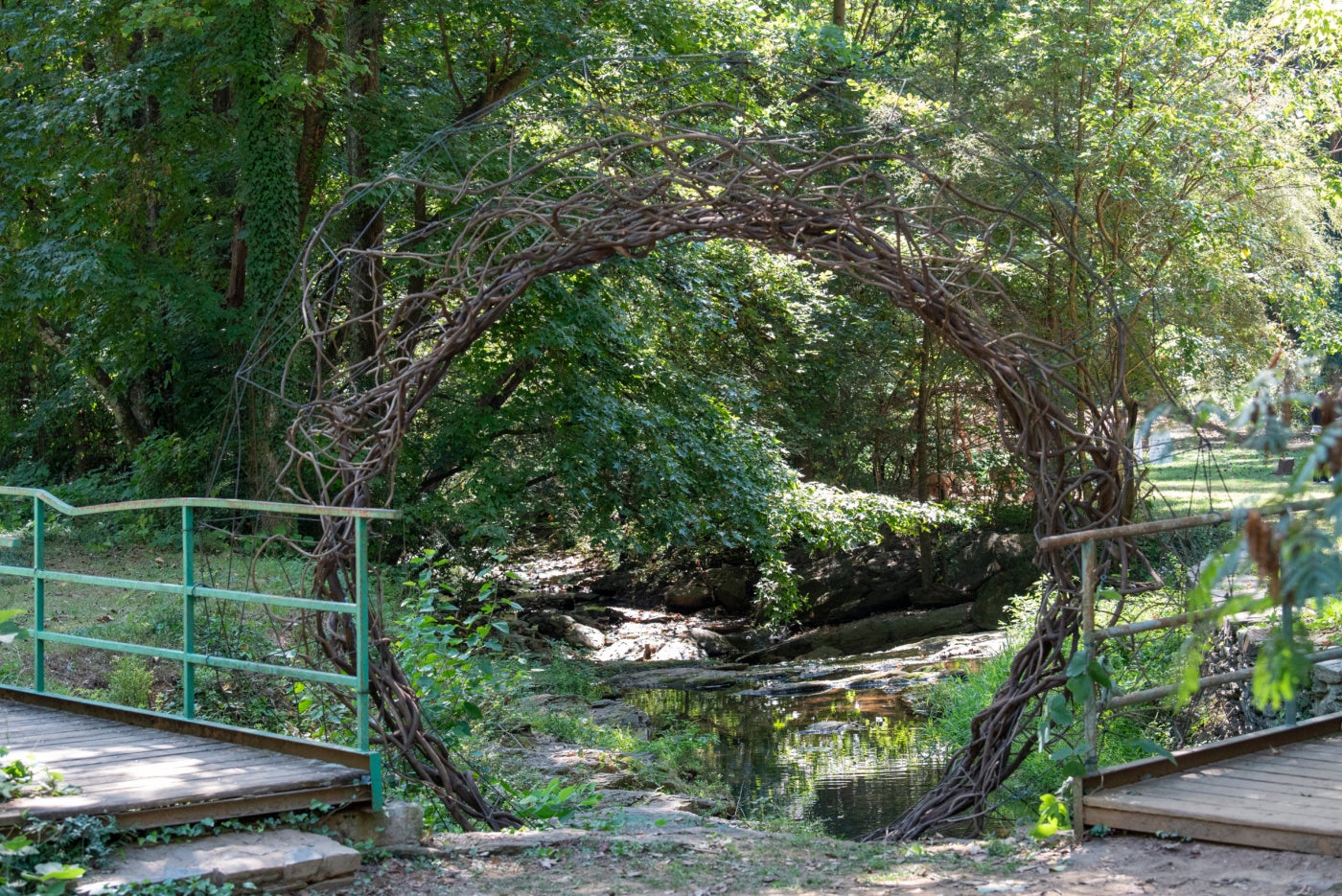
Parish and Sunde documented their journey via livestream and daily audio journals and have brought the spirit of their travels back to Atlanta with installations in three public parks: Arthur Langford, Jr. Park, Kirkwood Urban Forest, and Perkerson Park. These “River Nooks” or “River Portals” invite visitors to encounter the river as a space of rest, caretaking, and peace through reflection and heightened presence.
The sculptures and installations were fabricated with help from Atlanta-based artist Julia Hill out of natural and found materials, including kudzu and willow foraged from the South River watershed in Atlanta, and oyster shells donated by Shell to Shore. This durational project highlights the importance of establishing close relationships with the natural world, which are essential to addressing the global climate crisis.
The interview was edited for length and clarity.
Amelia Parenteau: Why was it important for this project to be a durational one?
Rachel Parish: I can’t think about even originating something without thinking about it as a durational act. It’s live, it’s conversation. There are signs at the parks with these installations, but people largely could just walk past them and experience the thing. It’s the invitation to the conversation that I care about. The durational aspect is my orientation to how we exist in the world.
Sarah Cameron Sunde: Duration comes from our theater backgrounds as well. The time-based nature of everything. Not all theater is durational, but the process of making theater definitely is. I’ve been thinking about duration for many years now and place my work in that aesthetic of durational performance. I’ve learned that taking time and pushing the boundaries of time are something that can open up these very small, intimate moments to speak on a global perspective. It allows that conversation between the intimate and the vast, the tiny micro and the macro.
Rachel and I decided early on that we wanted to make something large-scale that neither of us could do on our own, that needed both of our brains, hearts, expertise, and connections. We didn’t know exactly where that would take us, and in some ways, this is only the beginning.
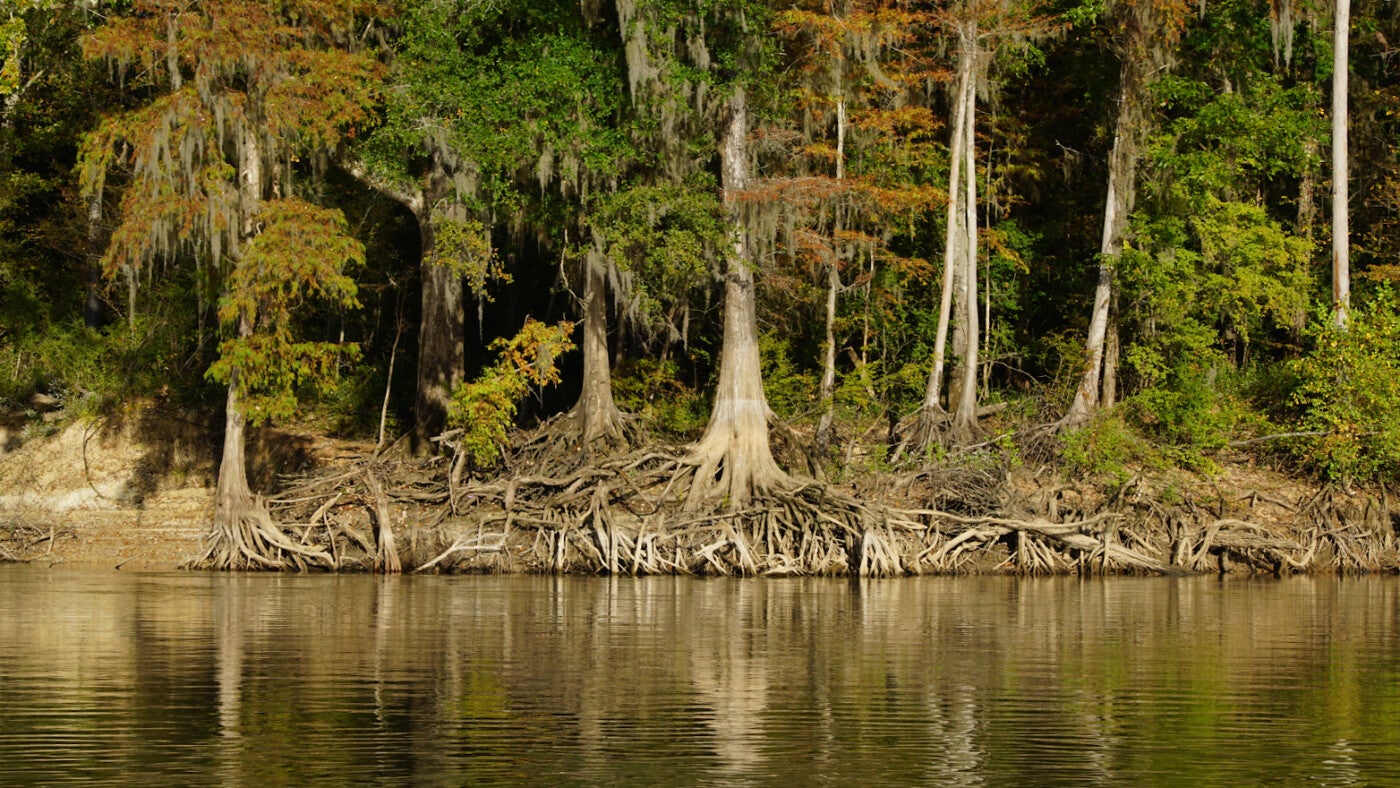
AP: You described wanting to create a “collective portrait of people who live and thrive along the water” with this project. Could you share a few stories of who you met along the river, and what conversations are lingering?
SCS: A lot of the relationships were facilitated beforehand in the preparation. We created this network of people who were advisors or willing to come with us for part of the journey or support us by bringing provisions.
Charlotte Gomez is a woman who in many ways embodies what we were hoping for, by inviting participation from folks along the river. We met her as we were pulling into the landing in Hawkinsville. She’s somebody who goes out on the water once a week. Kayaking is her solace. It’s her happy place. We chatted, and she was telling us about the alligators, and we invited her to come along.
Most people when we said, “Come along!” were like, “Yeah, yeah, sure.” There’s a big barrier to entry, and most people couldn’t join, even though our invitation was genuine. Part of the livestream concept was that it was a way to participate from afar if you couldn’t join us on the river.
But Charlotte found us through Instagram and late that night we got a message from her, and she was like, “I want to come with you.” And I remember us looking at each other and thinking, “Are we doing this?”
And we did! We traveled with Charlotte for three days. She is somebody with very different life experiences, from rural Georgia. Being in slow conversation with her over that time and seeing how moved she was by the experience of being with us was really impactful. It was surprising to me that it moved her so deeply. But the goal is to move people. We want people to feel something and to feel like they’re part of something.
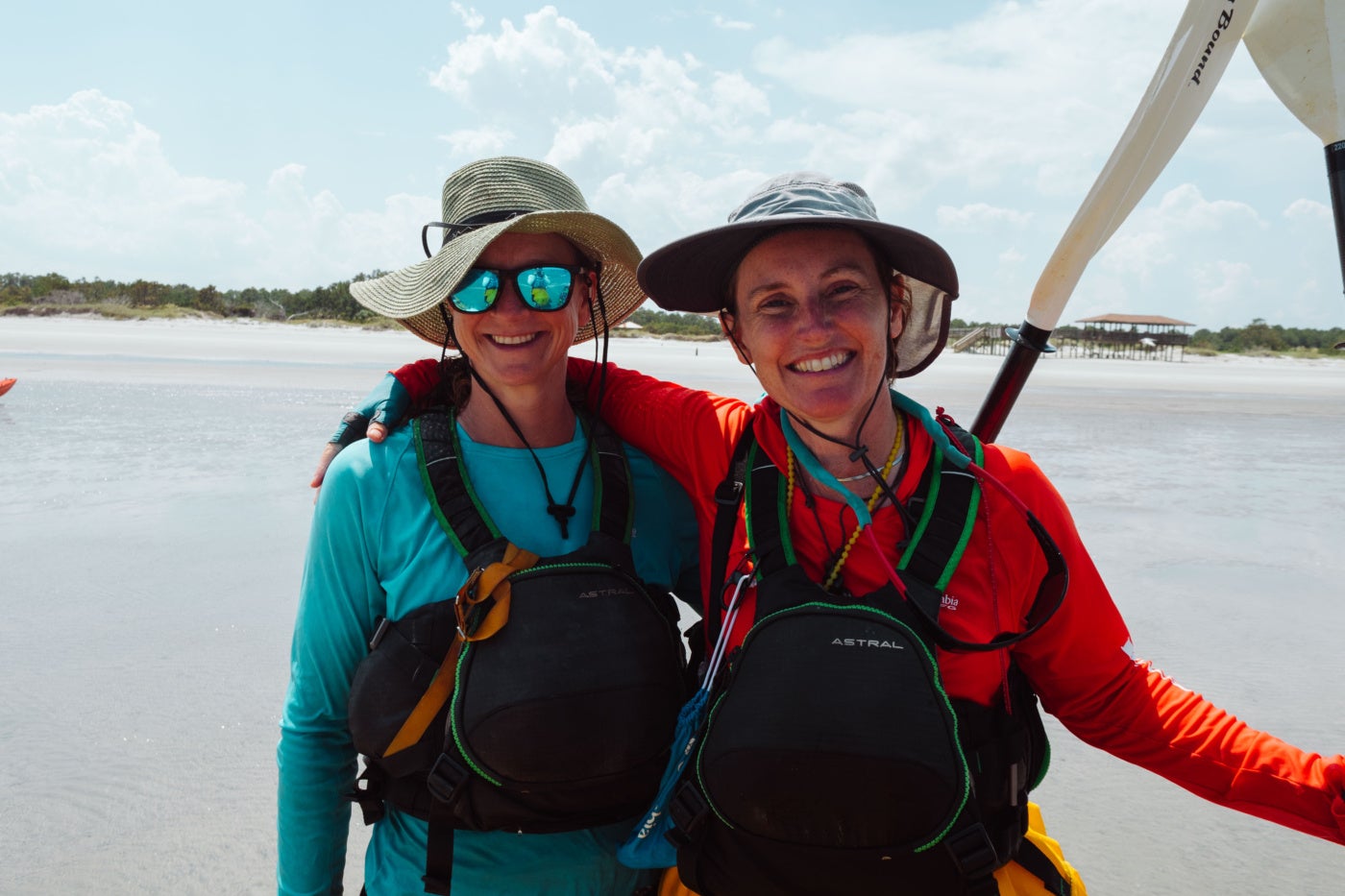
RP: We had organized it so we had people with us all the way up to Macon. Then when we got to Macon, we realized we were looking into going solo into Bond Swamp, a place with few easy places to stop and camp, without any support. There was a section between Macon and Hawkinsville that was going to be really hard. There would be 30-mile paddle days, and we’re more of a 14-mile crew, so what do we do?
I grew up in Macon, so I started reaching out to local folks and was eventually connected to John Wilson, a longtime environmental activist who lived in Bond Swamp and had been responsible for saving it from having a road built through it. I called him, and he was helpful, but skeptical. But he Googled us and called his friends and was like, “This sounds weird but interesting. I think I’ve got a canoe somewhere.”
He joined us the next day and traveled with us for four days south from there. He has committed himself to the ecological preservation of this area in all kinds of ways for a long time. But he hadn’t spent that much time physically on the river, so it was an intriguing invitation to spend a slow-moving time on the river that goes through the heart of this place that he knows so well. He taught us how to find campsites behind stands of willow. And he taught us about how he sees the place that he calls home, which is very different to how people mythologize the swamp from the outside as a place that feels scary or foreign. It was also important to him to have people put their bodies in a space that he loves and cares about.
We needed help over and over again. And that help was met by people who incredibly appreciated the attention we were giving to something that they loved.
SCS: It’s interesting how by just doing this crazy thing, we allowed people who are very invested in this space to see things with a new perspective.
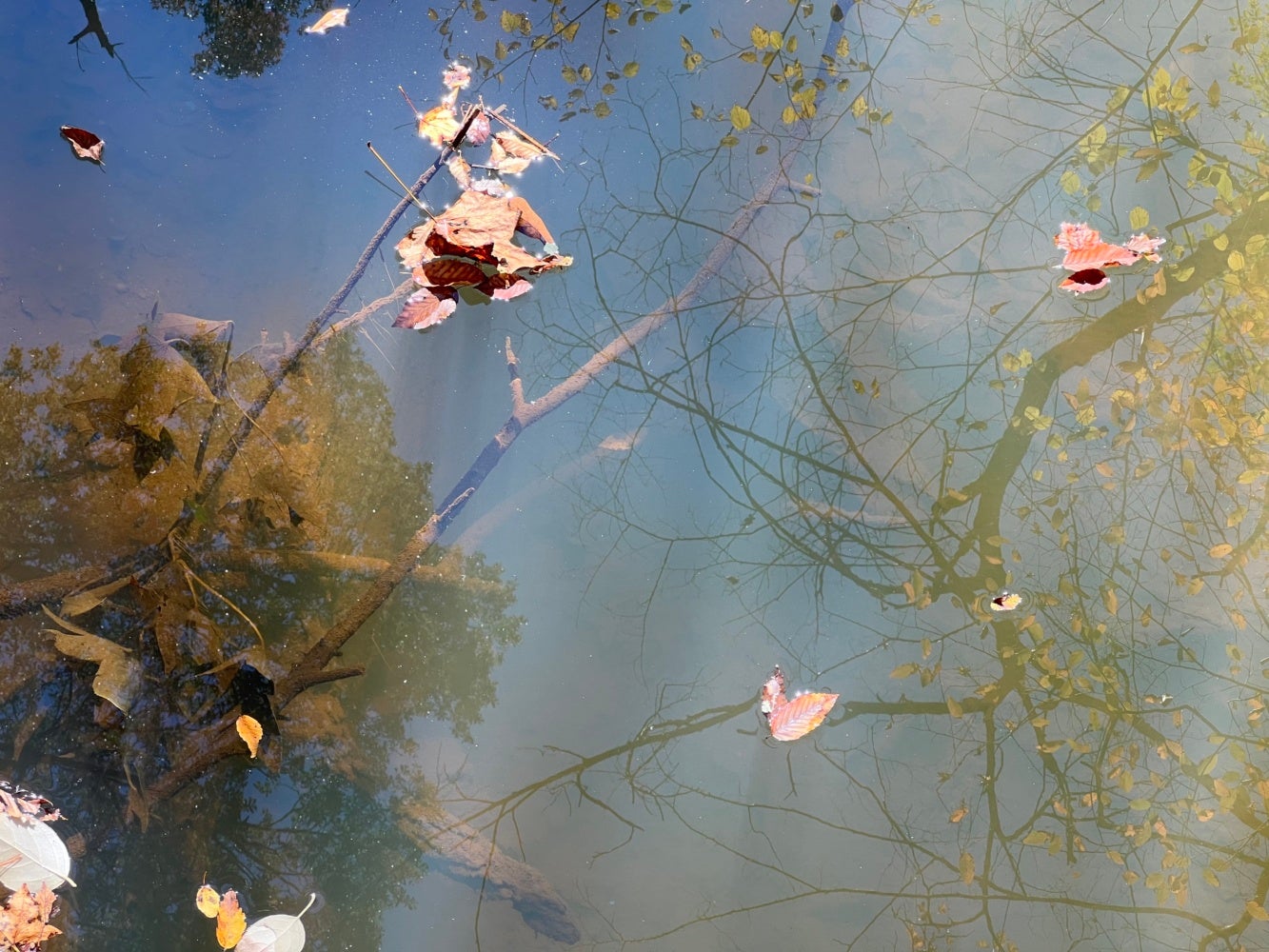
AP: People so often feel like we need permission to slow down and pay attention in a different way. Why water for both of you, why is that connecting force in your work?
RP: All my work is about relationships and cultivating conversations that enable community members that are already in relationship with each other to have a new meeting. Atlanta is an amazing place to work in the public realm and in civic practice. People are curious and open, and the city itself is about movement.
The opportunity to work with water came with the invitation from Flux to do the last project I did with them, Emergence (2022). Water in Atlanta is fascinating, and working with it for the last several years has been an opportunity to deeply explore the many ways water exists as a community member here. With Emergence, I created temporary monuments to the headwaters of the four creeks that begin underneath downtown Atlanta. Through performance, video, sound, and sculpture, this project offered opportunities to foreground water as an originating force for people on a narrative level, from a scientific to a cultural perspective. This was profound for me.
In Atlanta you don’t have that many opportunities to see vast amounts of water, but you have thousands of creeks in people’s backyards, places where people have an intimate, one-on-one relationship with a personal body of water. That’s gold in terms of fostering the kind of conversation that brings people closer to themselves and the things that they love, but that they don’t have an opportunity to cherish on a larger platform.
SCS: I turned my attention towards water in 2012 when Hurricane Sandy hit New York City and I understood how vulnerable we were for the first time, because it was my home. I realized New York could disappear in my lifetime. We might have to abandon the city. Civilizations come and go, and here we were in the heyday of New York, and we just might be wiped out. So that led me to 36.5 / A Durational Performance with the Sea (2013-2022) and standing in the water for a full tidal cycle nine times around the world. It was the first time I felt the need to connect the performance work I was doing with my environmental concerns.
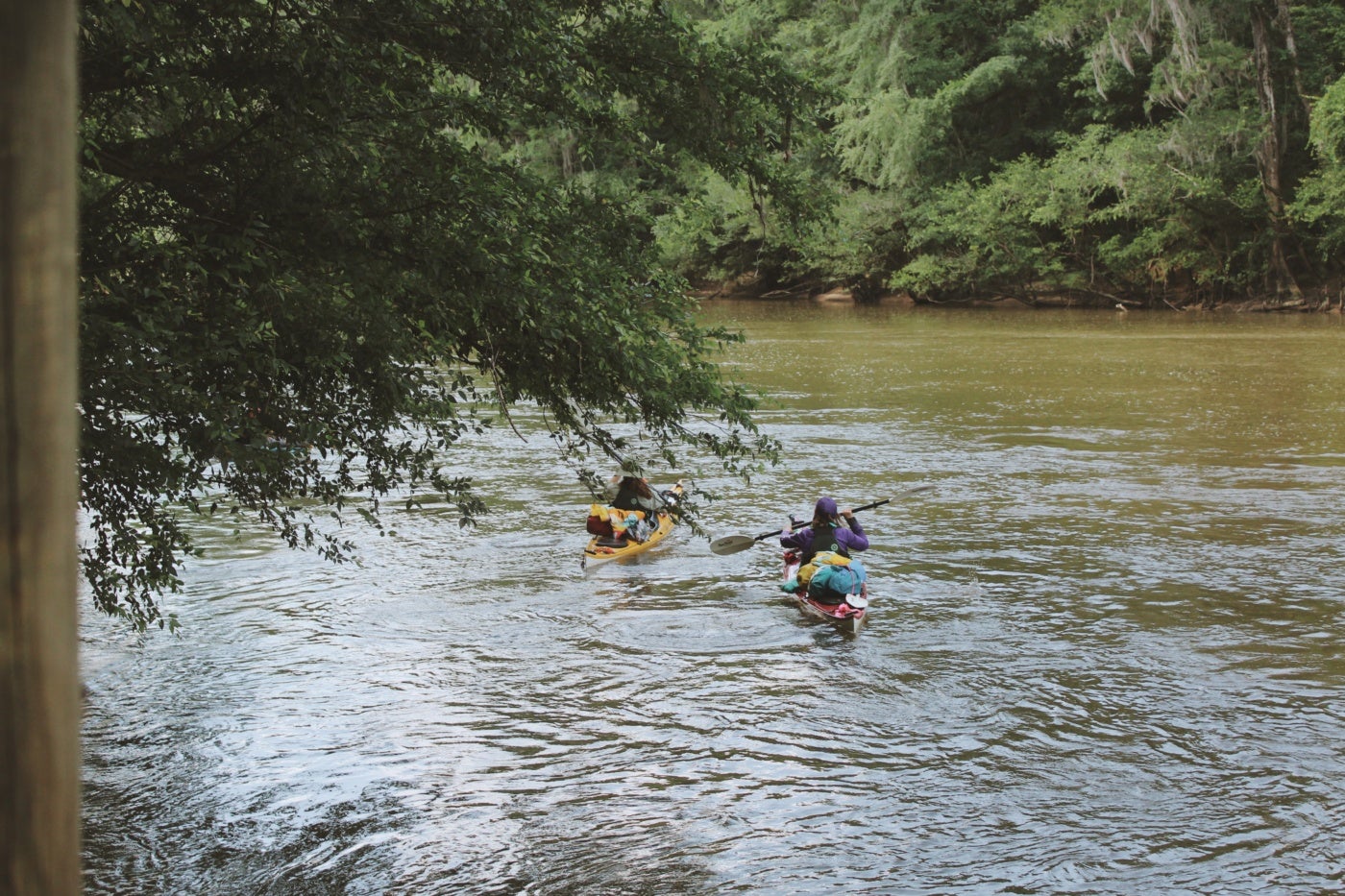
36.5 led me to co-found Works on Water, and frame water art as the new land art, putting it in an art historical frame. It’s experiential. It’s in this lineage of land art, performance art, conceptual art, public art, social practice art. Nowadays, it’s more urban-based, less about the monument, more about the temporary. That’s been a big part of the frame of my work since 2017.
In Atlanta you don’t have that many opportunities to see vast amounts of water, but you have thousands of creeks in people’s backyards, places where people have an intimate, one-on-one relationship with a personal body of water.
AP: What do you see as the future of these bodies of water?
RP: It’s a big watershed, and there are people who love their water and who know how to take care of their environment, who are awesome advocates for it. It’s underused, which is a pro and a con. You don’t want too many people overusing it and degrading it or turning it into some kind of mega tourist attraction. But it’s also gorgeous, and there’s so much wildlife and recreation potential. The people who use it and live along it are inspirational and helpful and awesome.
There’s also currently a chemical fire in a plant outside of Conyers, right on the South River. There was a giant mulch fire in the Cop City area that was creating a fish kill five river miles downstream from it.1 There are also things within the Ocmulgee and Altamaha areas that terribly endanger the water quality. Nothing needs to be destroyed, but the water is not being cared for by the people in government and leadership positions in terms of oversight and controls on the threats from different kinds of development and industry that are very present all along this watershed. It is such an amazing, diverse, rich, welcoming part of our ecological body, and it is threatened.
SCS: Our project is founded in this hope that if we can help turn enough people’s attention to the water, that connection can be felt. And of course, it’s not going to be just us. The South River Watershed Alliance is working hard, the Ocmulgee folks, the Altamaha Riverkeepers, the Georgia River Network, all the river keepers. We’re one little spoke in the wheel of all the people who are advocating for this body of water to have better oversight and for people to care and for the guidelines of the Clean Water Act to be abided by.
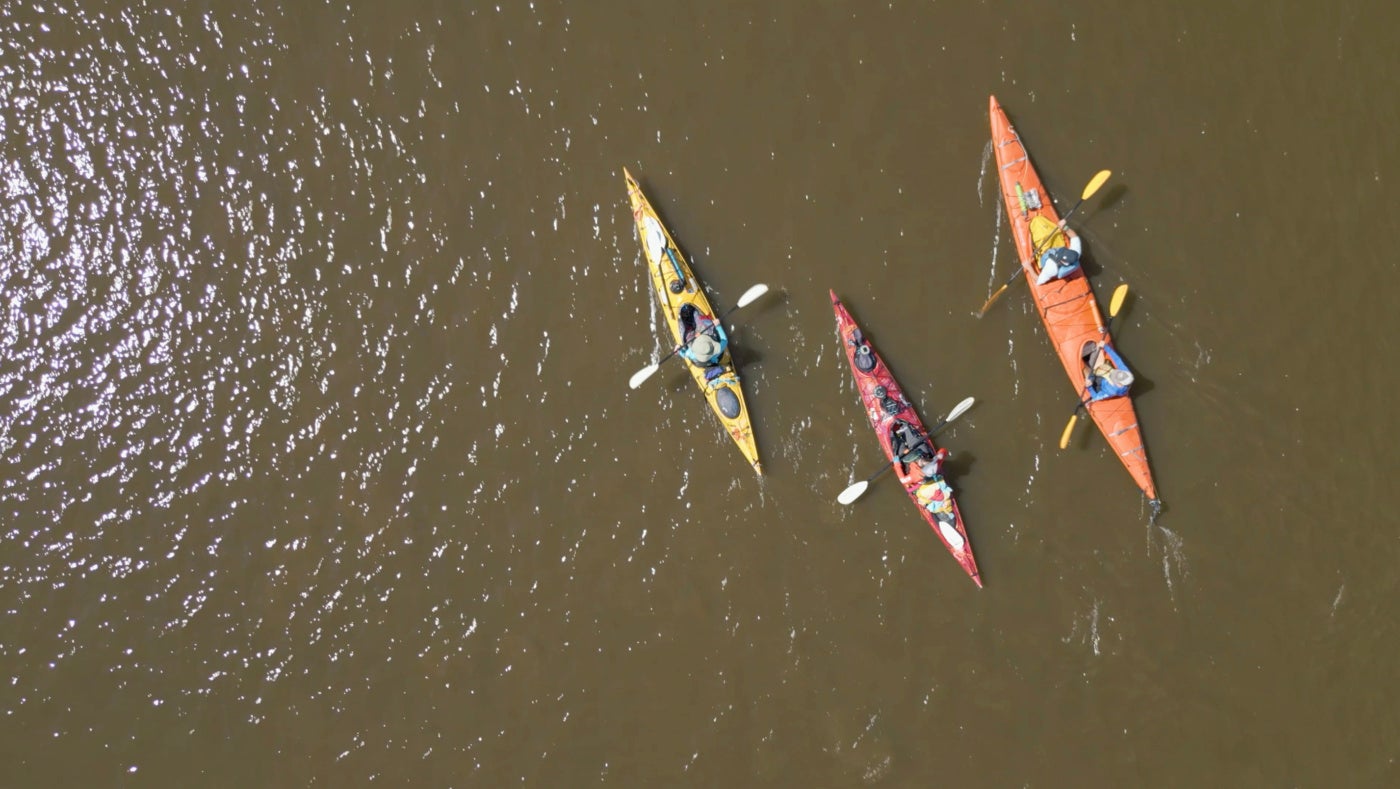
[1] The South River Watershed Alliance reported on the 3-story fertilized mulch fire causing major contamination, and a confirmed fish kill on the South River in September 2024.“3-story fertilized mulch fire causes major contamination, fish kill on the South River,” South River Watershed Alliance, September 9, 2024, https://www.southriverga.org/blog/3-story-fertilized-mulch-fire-causes-major-contamination-fish-kill-on-the-south-river.

